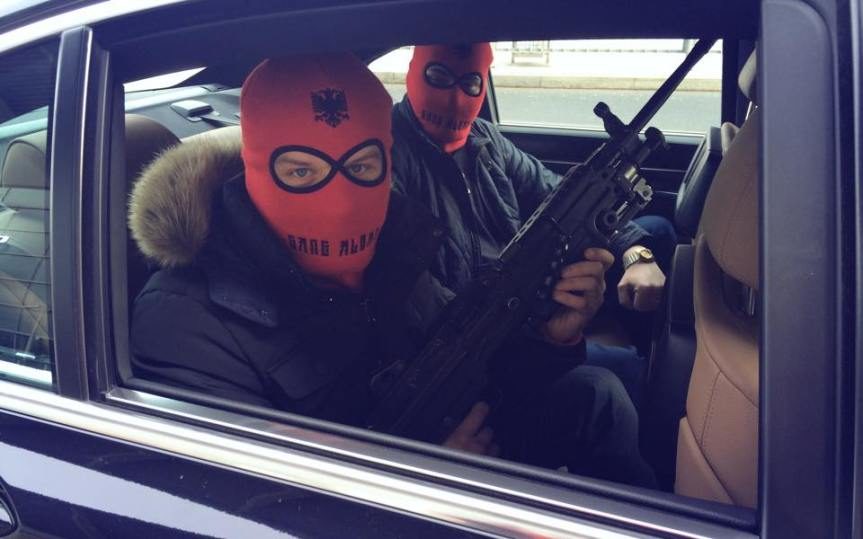Tre medlemmer af den samme Kosovofamilie er på nuværende tidspunkt under anklage i Schweiz for at have opereret én af Europas største engrossalsoperationer for heroin.
Anklagerne siger, at den 69 årige far og hans to sønner på henholdsvis 42 og 28 brugte deres base i det sydøsteuropæiske land til at importere 1,5 tons heroin fra Tyrkiet med henblik på salg andre steder.
"[Klanen] har været én af de vigtigste leverandører af heorin til vesteuropa sinden midten af 1990'erne," hævder anklageren. Forsvaret benægter alle anklager.
De kom for retten i Schweiz, fordi brødrene levede og arbejdede der. En kendelse fra den Føderale Strafferet i Bellinzona ventes i slutningen af oktober.
Kommentar: Delvist oversat af Sott.ner fra
Who is protecting them? Ethnic Albanians control heroin supply in Switzerland
According to Roger Flury, an illegal drugs expert at the Federal Police Office, the seizure was very significant, even though it was split between different countries.
"1,500 kg - that's between 25 to 50 per cent of what people consume in Switzerland in one year," he told swissinfo.
Significant threat
In its 2007 internal security report published in July the federal police said that "criminal organisations from southeastern Europe" played a "significant role" in Switzerland.
These internationally interlinked groups were involved in numerous criminal activities including drug and human trafficking, migrant smuggling, extortion, prostitution and money laundering, it stated.
According to the Vienna-based United Nations Office on Drugs and Crime (UNODC), Switzerland has historically been singled out as one of the countries most affected by ethnic Albanian heroin trafficking, due to the large expatriate population.
There were an estimated 94,000 Albanian-speakers in Switzerland in 2000. In the late 1990s, Albanians were blamed for trafficking some 70 to 90 per cent of Switzerland's heroin supply into the country.
"The influence of ethnic Albanian criminal groups is still very strong, especially in the heroin market, and it's not abating," said Flury. "The vast majority of heroin sold in Switzerland still transits via ethnic Albanian groups."
Other criminal groups involved in the trade in Switzerland are from Turkey, Croatia, Serbia, West Africa and Iraq, he added.
But Theodore Leggett, author of a UNODC report entitled "Crime and its impact on the Balkans", felt the importance of ethnic Albanian criminal gangs was waning.
"They had a period of unprecedented access to European markets in the 1990s and early 2000s and took advantage of that, and others took advantage of them, but stopping speedboat traffic to Italy had a big effect. I don't think they're competitive [in the] long term," he told swissinfo.
Ethnic Albanian criminal gangs built up a reputation as effective traffickers as they were violent and clannish with a language nobody else could understand and had an honour code similar to the Sicilian mafia, explained Leggett.
"But I don't think this makes for a very competitive drug trafficking group in the long term, as violence attracts unwanted attention. What tends to happen with these Albanian crime groups is that they build up to a certain level, then they shoot each other over an honour issue, which undermines their place in the market."
Balkan route
Southeastern Europe lies along the most conventional route - the so-called Balkan route - between the supplier of some 82 per cent of the world's heroin, Afghanistan, and its most lucrative consumer market, western Europe.
Today the Balkan route has split in three - a northern path (Afghanistan-Pakistan/Iran-Turkey-Bulgaria-Romania-Hungary), a central, original path (Afghanistan-Pakistan/Iran-Turkey-Bulgaria-Former Yugoslav Republic of Macedonia/Serbia-Bosnia and Herzegovina-Croatia-Slovenia-Italy) and a southern route (Afghanistan-Pakistan/Iran-Turkey-Bulgaria-Macedonia-Kosovo-Albania-Italy).
It is estimated that about 100 tonnes of heroin crosses southeastern Europe every year on its way to western Europe, of which 85 tons eventually makes it to the consumer, a flow estimated at $25-30 billion, says UNODC.
Switzerland has a small domestic market. It's not a traditional redistribution point, like the Netherlands, but more a transit country, with traffickers taking advantage of the land and air connections.
"The Swiss police are quite good in stopping the stuff and make a lot of seizures, but it continues to be a place that a lot of traffickers favour," said Leggett.
Despite a stabilisation in the world drugs market, in June the UN sounded the alarm about the recent surge in drug supply from Afghanistan, which may drive addiction rates up.
"We don't know exactly where this surge in heroin supply is headed. There's a belief that it's being stockpiled - getting banked," said Leggett.
But according to the Swiss police, Switzerland is already feeling this increase. Consumption is stable in Switzerland, but with decreasing prices and increasing purity levels, which are worrying indicators," confirmed Flury.
In 2007 seizures of heroin by Swiss police rose to 300kg from 230kg in 2006.
Heroin and Switzerland
In the late 1980s and early 1990s Switzerland had one of the highest rates of heroin addiction in Europe and a faster-than-average spread of HIV.
Many addicts were sharing needles at the notorious open drug scenes in cities such as Zurich and Bern.
In 1991 Switzerland launched a new strategy, based on the four pillars of prevention, treatment, harm reduction and repression.
Since then, various harm reduction strategies have been developed: heroin prescription programmes, needle exchanges and injection rooms.
The open drug scene began to be dismantled in the mid-1990s. Thanks in part to the new programmes, heroin use is declining and the mortality rate has been halved.
Nearly 25,000 heroin addicts live in Switzerland. Two out of three users are in treatment programmes. 14,500 addicts are being treated with methadone, 1,300 with heroin and 500 with buprenorphine.




Kommentar: Two of the above criminals were convicted that year, but the Swiss found these Albanians continued to act with impunity. In 2010, Swiss politician Dick Marty published a Council of Europe report detailing how Kosovo leader Hashim Thaçi - a darling of the US State Department - is in fact the 'ethnic Albanian' mafia don for heroin, prostitute and organ smuggling in Europe.
And he's still the 'legitimate leader of Kosovo'.